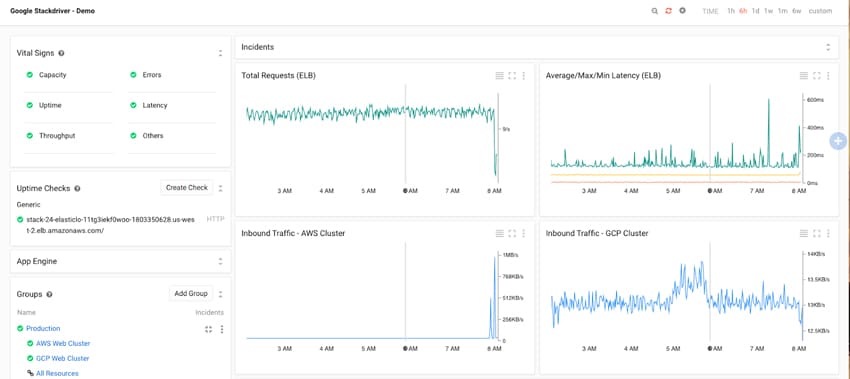Today at the GCP Next event Google introduced its new unified monitoring, logging and diagnostics service, Stackdriver. Unique to Stackdriver is that it allows users to monitor applications across Google Cloud Platform (GCP) and Amazon Web Services (AWS) or a combination of both. According to Google, this is the first service that provides rich dashboards, uptime monitoring, alerting, log analysis, tracing, error reporting and production debugging, across GCP and AWS, in a single, unified offering.

Though they are often thought of as direct competitors, many companies run applications across both GCP and AWS. Choosing to use multiple cloud infrastructures may be for higher availability, migrations from one to the next, or selecting the best features for their applications. Whatever the reason they choose to do so, companies can now use Stackdriver to monitor their applications across both cloud services through a single dashboard. According to Google, Stackdriver is simple to setup and scale. Users simply need to create an account, configure integration with AWS, and Stackdriver automatically discovers cloud resources and provides users with an initial set of metrics and dashboards.
Using Stackdriver, customers can monitor the health of applications that are split across clusters on both GCP and AWS. They can define alert policies for these clusters telling them when capacity is reached and they can search for errors through a single interface, for both AWS and EC2. Error reports can be generated for errors that occur in either platform.
Google also states that users are able to eliminate data silos and the ability to fix issue quicker. Users will be able to incorporate logs and metrics from their cloud platforms, systems, databases, messaging queues, web servers and application tier into the same monitoring system. They will be able to follow an issue across the monitoring, logging and diagnostics components as opposed to manually correlating this information across five or more disconnected tools. If an issue is discovered, Stackdriver enables users to follow the trail back to the root cause.
Availability
Stackdriver is available now in Beta form. Interested parts can try it out for free in the link below.




 Amazon
Amazon